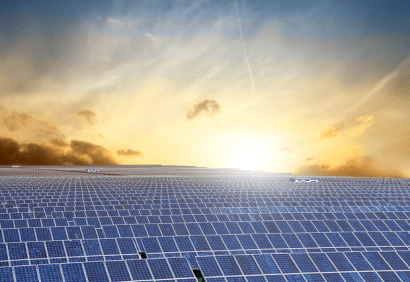The Energy Networks Association – the primary lobby group for Australia’s grid operators – has produced a detailed analysis on how Australia can meet its emissions reduction targets and best achieve its clean energy transition.
But there is one thing missing – under its modelling there will be no new large-scale solar built in the next decade to meet the country’s current emissions reduction target of 26-28 per cent by 2030. Nothing. Zero. Nil. Nada.
The modelling conducted by consultancy group Jacobs on behalf of the ENA was released in a report that pushes the lobby group’s argument that a “technology neutral” approach can deliver the best results for consumers. It got a nice big write up in the Australian Financial Review.
By technology neutral, the ENA means no renewable energy target, just a low emissions target. That means more gas-fired generation – about 8,000MW of new gas fired plants in its scenarios. The ENA also represents the operators of gas pipelines.
ENA chief executive John Bradley was at pains to point out in the media release that “the call for technology neutral policy was no attack” on renewable energy sources.
“If markets are allowed to work, each technology finds its efficient role. Jacobs saw renewable generation reaching the 33,000 GWh target by 2020 in all scenarios examined and continuing to grow beyond 2020,” Bradley said.
Except that, according to the Jacobs report, hardly any large scale solar will be built between now and 2020 to meet the mandated RET, and then no large scale solar at all is built between 2020 and 2030.
Say what?
According to the table above, there will only be 768GWh of large scale solar by 2030. Considering that Nyngan alone produces more than 200GWh, and Nyngan, Broken Hill, Moree, Greenough River and Degrussa together produce 500GWh, it seems that Jacobs is ignoring even the imminent results of the large-scale solar tender by the Australian Renewable Energy Agency.
And then no solar at all in the next decade? That is despite the fact that under basically all scenarios envisaged by analysts – even conservative groups like the International Energy Agency and the Bureau of Resource Economics – large-scale solar will be the cheapest of any new technology in that decade.
As we pointed out on Monday, Australia is set for a large-scale solar investment boom, precisely because the cost of solar is falling to match that of wind energy, solar plants are easier and quicker to build, and Australia has a lot of sun.
So, why do Jacobs and ENA believe there will not be a single MW of the cheapest technology? We asked the ENA for an explanation. They said:
“In the 26-28% scenarios there is limited growth in electricity demand over the decade, largely due to increasing levels of rooftop PV. There is a large increase in rooftop solar PV, which generates at the same time of the day as large-scale solar would. This effectively reduces the daytime wholesale price to being not much higher than off-peak prices.
“The peak price period shifts to the afternoon/evening hours when solar PV generation would be low, which is where wind generation benefits, but large-scale solar doesn’t at this point in the day. Hence, additional investment in large-scale PV in these scenarios doesn’t occur, because the revenue doesn’t offset the investment costs.”
The Jacobs modelling suggests just over 5,000GW of new rooftop solar, roughly equivalent to what has been installed over the last six years in Australia.
But, Bloomberg New Energy Finance, for instance, acknowledging the same issues, suggests that there will be 27GW of large scale solar by 2040, and around 10GW of that could be built by 2030. They also suggest 38GW of rooftop solar and a lot of storage will be installed as well. See graph below for their solar forecasts.
We’d go into the Jacobs modelling and the ENA proposals in more details, along with their justification for their preferred scenarios and their impact on consumer electricity bills, but can’t see why when they don’t factor in what will the cheapest generation technology. We have published an op ed piece they contributed here.









